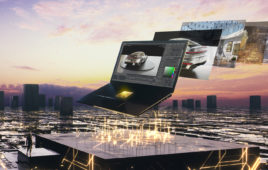This family of fully integrated current sensor linear ICs in a core-less package senses ac and dc currents up to 100 A. ACS780/ACS781 are provided in an automotive-grade, low-profile (1.5 mm thick) sensor IC package. This package has a small footprint and delivers high power density for current sensing applications. The Hall sensor technology also incorporates common-mode field rejection to optimize performance in the presence of interfering magnetic fields generated by nearby current-carrying conductors.

The devices consist of a precision, low-offset linear Hall circuit with a copper conduction path located near the die. Applied current flowing through this copper conduction path generates a magnetic field which the Hall IC converts into a proportional voltage. Device accuracy is optimized through the close proximity of the primary conductor to the Hall transducer and factory programming of the sensitivity and zero-ampere output voltage.
Chopper-stabilized signal path and digital temperature compensation technology also contribute to the stability of the devices across the operating temperature range. High-level immunity to current conductor dV/dt and stray electric fields is offered through proprietary integrated shield technology, for low-output voltage ripple and low-offset drift in high-side, high-voltage applications. The output of the device has a positive slope (>VCC / 2) when an increasing current flows through the primary copper conduction path (from terminal 8 to terminal 9), which is the path used for current sampling. The internal resistance of this conductive path is 200 μΩ typical, providing low power loss. The thickness of the copper conductor allows protects the devices at high overcurrent conditions. The terminals of the conductive path are electrically isolated from the signal leads (pins 1 through 7, and 10), allowing the device to operate safely with voltages up to 100 V peak on the primary conductor.
The devices are fully calibrated prior to shipment from the factory. The ACS780xLR family is lead (Pb) free. All leads are plated with 100% matte tin, and there is no Pb inside the package.
Allegro MicroSystems, LLC
allegromicro.com
Filed Under: Microprocessors





Tell Us What You Think!